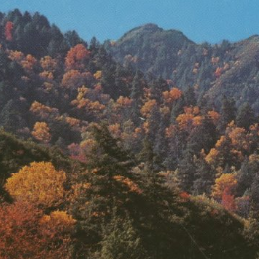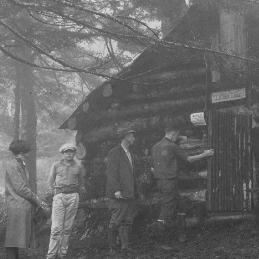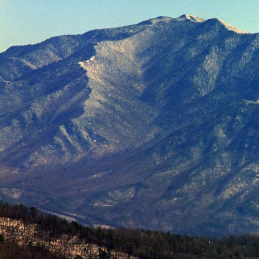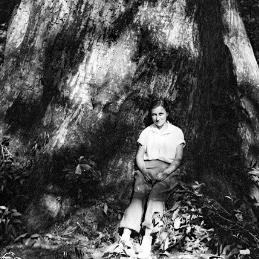Browse
Export 19 results:
Filters: Author is Renfro, James R [Clear All Filters]
Effects of the Ambient Ozone Concentrations on Mature Eastern Hardwood Trees Growing in Great Smoky Mountains In 85th Annual Meeting and Exhibition, Air and Waste Management Association. Kansas City, Missouri, 1992.
"Empirical Evidence of Growth Decline Related to Visible Ozone Injury." Forest Ecology and Management 104, no. 1-3 (1998): 129.
"Evaluation of Ozone Injury on Foliage of Black Cherry (Prunus serotina) and Tall Milkweed (Asclepias exaltata) in Great Smoky Mountains National Park." Environmental Pollution 95, no. 1 (1997): 13-18.
An Evaluation of the Backcountry Camping Permit System for 1983 and 1986 at Great Smoky Mountains National Park. Gatlinburg, TN: Uplands Field Research Laboratory, Great Smoky Mountains National Park, 1989.
"Great Smoky Mountains Plants Studies for Ozone Sensitivity." Park Science: A Resource Management Bulletin 12, no. 1 (1992): 6-7.
"Mature Black Cherry Used as a Bioindicator of Ozone Injury." Water, Air, and Soil Pollution 116, no. 1-2 (1999): 261-266.
"Ozone and PM2.5 Exposure and Acute Pulmonary Health Effects: A Study of Hikers in the Great Smoky Mountains National Park." Environmental Health Perspectives 114, no. 7 (2006): 1044-1052.
Ozone Biomonitoring Trend Plots and Surveys in Great Smoky Mountains National Park In Third Annual Southern Appalachian Man and the Biosphere Conference. Gatlinburg, TN: Tennessee Valley Authority, 1992.
"Ozone Injury on Cutleaf Coneflower (Rudbeckia laciniata) and Crown-Beard (Verbesina occidentalis) in Great Smoky Mountains National Park." Environmental Pollution 125, no. 1 (2003): 53-59.
Ozone Response of Selected Plant Species from the Great Smoky Mountains National Park In First Annual Southern Appalachian Man and the Biosphere Conference. Gatlinburg, TN: Tennessee Valley Authority, 1990.
"Preliminary Findings From the Great Smoky Mountains National Park Air Quality and Hiker Health Study." Epidemiology 15, no. 4 (2004): S216.
"Relationships between Cellular Injury, Visible Injury of Leaves, and Ozone Exposure Levels for Several Dicotyledonous Plant Species at Great Smoky Mountains National Park." Environmental and Experimental Botany 36, no. 2 (1996): 229-237.
"Seedling Insensitivity to Ozone for Three Conifer Species Native to Great Smoky Mountains National Park." Environmental Pollution 108, no. 2 (2000): 141-151.
Sensitivity of Native Plant Species to Elevated Levels of Ozone In Third Annual Southern Appalachian Man and the Biosphere Conference. Gatlinburg, TN: Tennessee Valley Authority, 1992.
"Sensitivity of Seedlings of Black Cherry (Prunus serotina Ehrh.) to Ozone in Great Smoky Mountains National Park. I. Exposure-Response Curves for Biomass." New Phytologist 130, no. 3 (1995): 447-459.
Sensitivity of Sycamore Seedlings (Platanus occidentalis) to Ozone in Great Smoky Mountains National Park Data from 1989. U. S. Department of the Interior, National Park Service, 1993.
"Temporal Patterns of Foliar Ozone Smptoms on Tall Milkweed (Asclepias exaltata L.) in Great Smoky Mountains National Park." Environmental Pollution 149, no. 3 (2007): 358-365.
"Visible Ozone Injury on Forest Trees in Great Smoky Mountains National Park, USA." Water Air and Soil Pollution 116, no. 1-2 (1999): 255-260.
Visitor Use Patterns at Great Smoky Mountains National Park In Research/Resources Management Report. Gatlinburg, TN: Uplands Field Research Laboratory, 1988.
















































